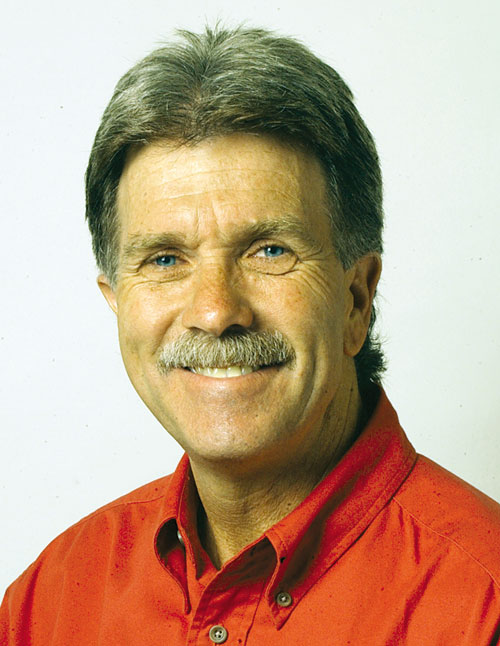One of the great benefits of being a volunteer at Henry Coe State Park is the opportunity to visit remote portions of the park. At 87,000 acres, including a 23,300 acre wilderness area, the reach of the park is tremendous. Its most remote portions are well beyond the stamina of most hikers, bikers, or equestrians, but there are occasions when volunteers are allowed to reach deep into the park by vehicle. Last Saturday was one of those occasions.
Since coming on the job, Coe Park’s new ranger, John Verhoeven, has scheduled events that bring together the park’s supporters for trips to remote regions seldom seen by visitors. Last Saturday, on a cold, windy and wet morning, 20 of us met at the park entrance at Bell Station, which is about five miles east of Casa de Fruta on Highway 152. We were gathering for a hike to Mount Robison in the middle of Coe’s Orestimba Wilderness.
How big is the park? It’s big, really big. It was an hour drive through park property to the trailhead. Had we continued driving in the same direction, it would have taken at least another hour to reach the park’s northern boundary at the base of Mt. Hamilton.
If you are familiar with Coe Park’s topography near the visitor center east of Morgan Hill, you know that steep and deep corrugations prevail. But, on the east side the terrain relaxes into rolling open country. Orestimba Creek and Red Creek meander through Mustang Flat and Paradise Flat (“Flat” in Coe?), wide open meadows covered with wildflowers.
Our car ride in was punctuated by ooh’s and aah’s as we passed so many fields of shooting stars – the most impressive displays I have ever seen – while snaking through open forests of blue oaks and gray pines. Sometimes nature inspires caution with its awesome power. Not today. This was a lush setting for a 19th century English carriage ride.
We parked by Orestimba Creek among solid expanses of yellow goldfields. By now, the wind and dreary wet overcast had given way to clear blue skies. It was a perfect day. Though rain was forecast for later in the day, I couldn’t imagine needing my raingear for the duration of our hike – a decision I would regret.
Over seven hours, we walked 12 miles, and climbed 1,600 feet to the top of Robison Mountain. We saw countless fields of wildflowers twisting through oaks and pines. We saw an abandoned mine shaft and evidence of the area’s long gone native people. The high ridgeline we walked dropped steeply on both sides, leaving each of us poised above everything around us. It was a perfect spot to watch the threatening clouds approach us, deliver their wet, windy bluster, then move on.
I lingered here and there, so I was one of the last people to return to Orestimba Creek, where we left the cars. Tailgates were down, coolers were open – laughter and animated conversation were testimony to fellowship built during the day. I grabbed a refreshment and contributed my own teasing and lying to the mix, then looked up at the changing light on the Rooster Comb. I hoped there was plenty of Ibuprofen at home, but the tired soreness felt nice.
The first drops of rain coaxed us into the cars and sent us on our way, and I couldn’t help thinking how a day like this is on one hand uneventful and on the other so extraordinary. So many times during the day, I wanted to tap the shoulder of the person next to me and say, “Would you look at THAT!”










